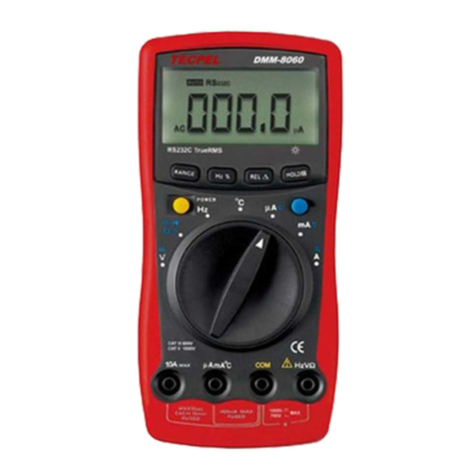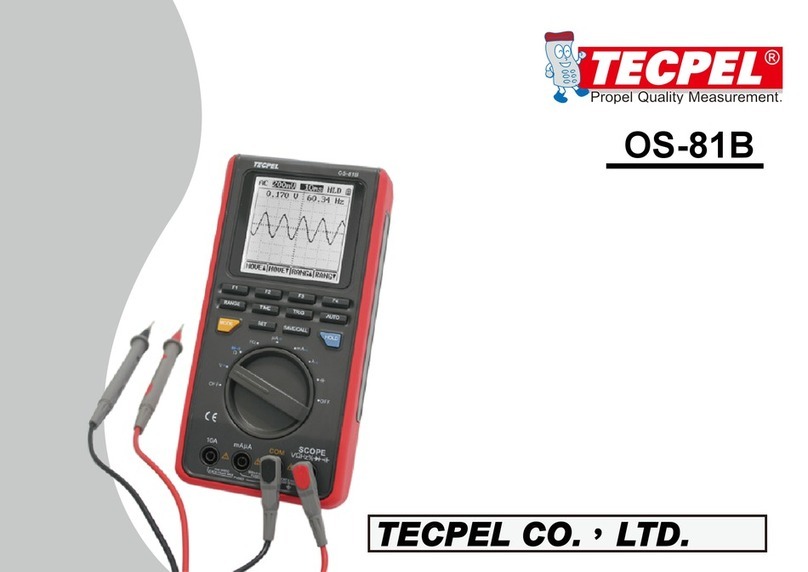
OS Series Handheld DSO & DMM Contents
6.14 Using Peak Detection to Display Glitches···············································································23
6.15 Selecting AC-coupling················································································································24
6.16 Reversing the Polarity of the Displayed Waveform······························································25
6.17 Using Waveform Mathematics Functions ··············································································26
6.18 Use USB mass storage device to save waveform data···························································27
7. USING THE MULTIMETER·····························································28
7.1 About this Chapter·······················································································································28
7.2 Making Meter Connections·········································································································28
7.3 Multimeter Operation Window··································································································28
7.4 Making Multimeter Measurements···························································································29
7.4.1 Measuring Resistance Values···················································································29
7.4.2 Measuring Diode········································································································30
7.4.3 On-off Test ··················································································································31
7.4.4 Measuring Capacitance·····························································································31
7.4.5 Measuring DC Voltage·······························································································32
7.4.6 Measuring AC Voltage·······························································································33
7.4.7 Measuring DC Current·······························································································34
7.4.8 Measuring AC Current·······························································································35
7.5 Freezing the Readings··················································································································36
7.6 Taking a Relative Measurement·································································································37
7.7 SelectingAutomatic/ManualRangeAdjustment······································································38
8. ADVANCED FUNCTION OF OSCILLOSCOPE··························39
8.1 About this Chapter·······················································································································39
8.2 Setting the Vertical CH1 and CH2·····························································································39
8.2.1 Setting the Channel Coupling···················································································40
8.2.2 Open and Close Settings on Channel······································································41
8.2.3 Setting the probe attenuation····················································································41
8.2.4 Setting of Inverted Waveform····················································································42
8.3 Make the Math Function Menu Setting····················································································42
8.4 Setting the Trigger System ··········································································································43
8.5 Triggering Control························································································································44
8.5.1 Edge Trigger···············································································································44
8.5.2 Video Trigger··············································································································45
8.5.3 Alternate trigger ···········································································································47
8.6 Selecting the acquisition mode····································································································49
8.7 Display Setting·······························································································································50
8.7.1 Display Style···············································································································50
8.7.2 Persistence·················································································································51
8.7.3 XY Mode·····················································································································51
8.7.4 Cymometer·················································································································52
8.8 Waveform Saving Setups·············································································································52


































